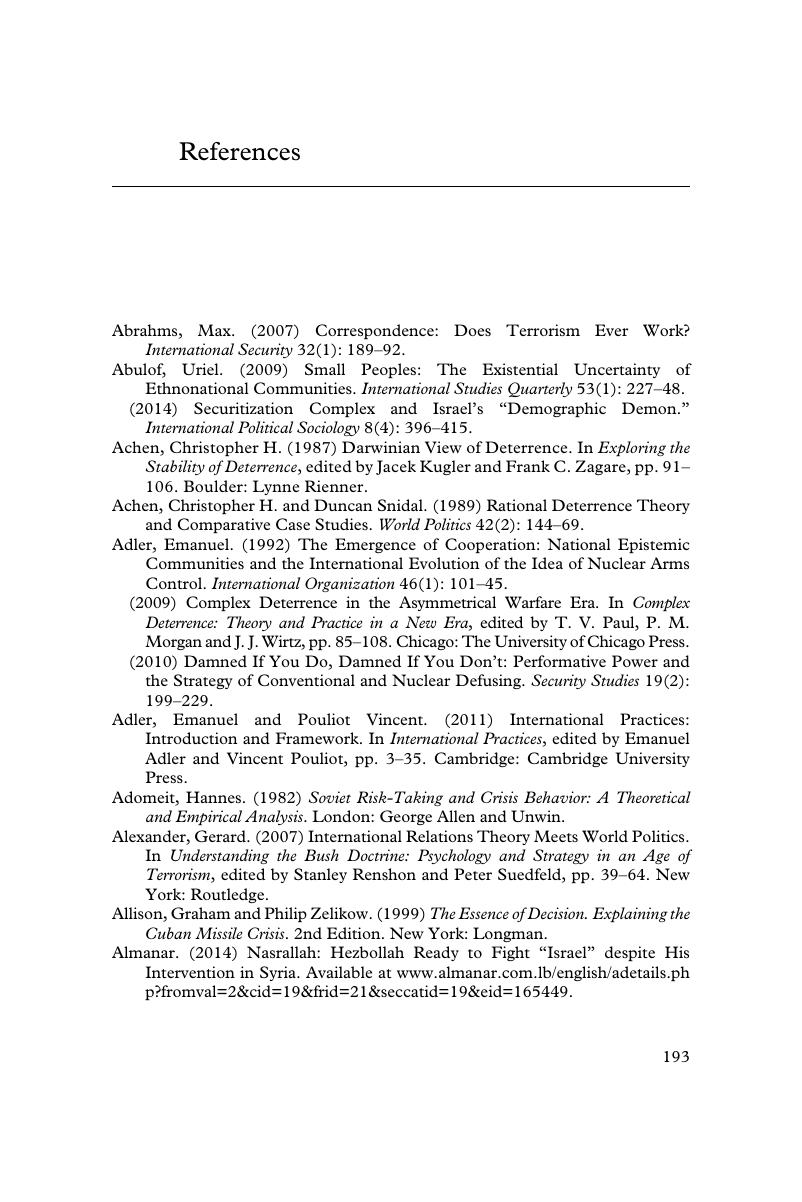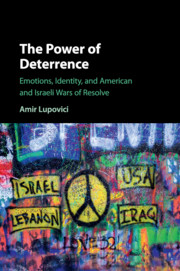Book contents
- The Power of Deterrence
- The Power of Deterrence
- Copyright page
- Dedication
- Contents
- Book part
- 1 Introduction
- 2 The Constitution of the Deterrer Identity
- 3 Ontological Security, Deterrence, and the Use of Force
- 4 The United States and the War on Terror
- 5 Israel and the Lebanon War
- 6 Conclusion
- References
- Index
- References
References
Published online by Cambridge University Press: 05 August 2016
- The Power of Deterrence
- The Power of Deterrence
- Copyright page
- Dedication
- Contents
- Book part
- 1 Introduction
- 2 The Constitution of the Deterrer Identity
- 3 Ontological Security, Deterrence, and the Use of Force
- 4 The United States and the War on Terror
- 5 Israel and the Lebanon War
- 6 Conclusion
- References
- Index
- References
Summary

Information
- Type
- Chapter
- Information
- The Power of DeterrenceEmotions, Identity and American and Israeli Wars of Resolve, pp. 193 - 223Publisher: Cambridge University PressPrint publication year: 2016
